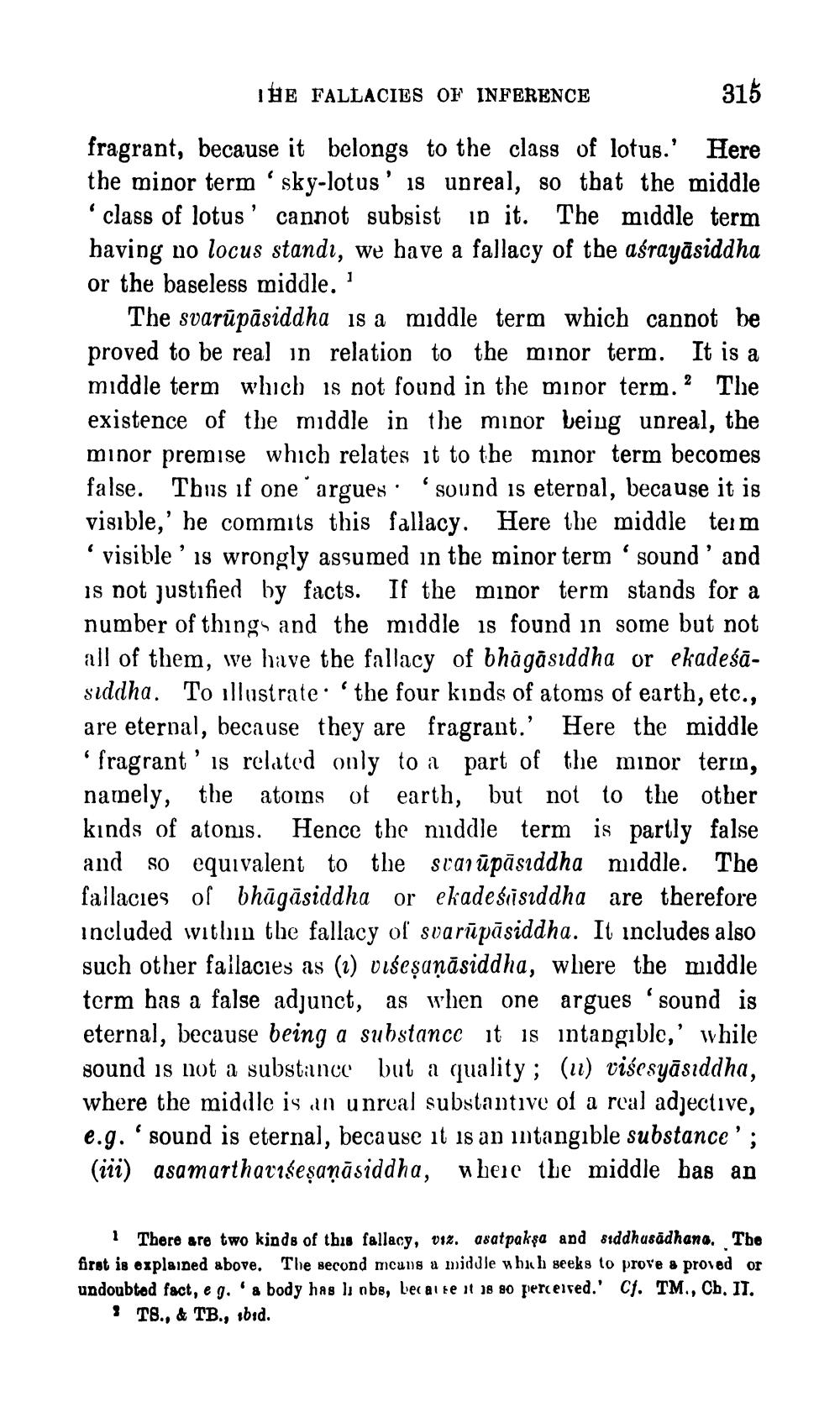________________
IHE FALLACIES OF INFERENCE
315
fragrant, because it belongs to the class of lotus.' Here the minor term 'sky-lotus' is unreal, so that the middle ' class of lotus' cannot subsist in it. The middle term having no locus standı, we have a fallacy of the aśrayāsiddha or the baseless middle. '
The svarupāsiddha is a middle term which cannot be proved to be real in relation to the minor term. It is a middle term which is not found in the minor term. 2 The existence of the middle in the minor being unreal, the minor premise which relates it to the minor term becomes false. Thus if one argues 'sound is eternal, because it is visible,' he commits this fallacy. Here the middle term 'visible' is wrongly assumed in the minor term 'sound' and is not justified by facts. If the minor term stands for a number of things and the middle is found in some but not all of them, we have the fallacy of bhagasiddha or ekadeśāsiddha. To illustrate the four kinds of atoms of earth, etc., are eternal, because they are fragrant.' Here the middle fragrant' is related only to a part of the minor term, namely, the atoms of earth, but not to the other kinds of atoms. Hence the middle term is partly false and so equivalent to the star upasiddha middle. The fallacies of bhāgasiddha or ekadeśasiddha are therefore included within the fallacy of svarupāsiddha. It includes also such other fallacies as (1) viseṣaṇāsiddha, where the middle term has a false adjunct, as when one argues 'sound is eternal, because being a substance it is intangible,' while sound is not a substance but a quality; (u) viśesyāsıddha, where the middle is an unreal substantive of a real adjective, e.g. 'sound is eternal, because it is an intangible substance'; (iii) asamarthavıśeṣaṇāsiddha, where the middle has an
6
1 There are two kinds of this fallacy, viz. asatpakṣa and siddhusadhana. The first is explained above. The second means a middle which seeks to prove a proved or undoubted fact, e g. a body has li nbs, because it is 80 perceived.' Cf. TM., Ch. II.
TS., & TB., ibid.




